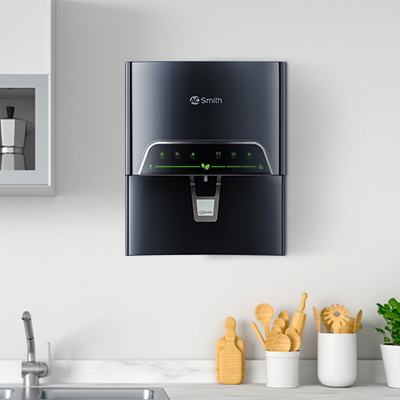Home planting for novices
Home planting for novices
Home Gardening
Developing your vegetables can be fun, just as fulfilling. All you want to get everything rolling is - a few good soils and not many plants, and this way, you give new solid vegetables to your family and friends and family. To turn into an expert vegetable nursery worker, you should learn and get the stuff to keep your plants solid just as solid. A portion of the vegetables you can undoubtedly fill in your kitchen garden incorporates spinach, cauliflower, green peas, etc.
Suppose you are thinking of growing some food and vegetables in your garden. In that case, Seedsheet is the online store that offers the best quality organic seeds that are chemical-free and help make a garden that is organic and easy to maintain. To know more about the products and prices, read our Seedsheet Review and save maximum.
A decent home cultivating plan might incorporate choosing the right area, deciding the size of the nursery, settling on the sorts and assortments of vegetables to plant. What should notice is that numerous vegetables can be filled in pots.
Presently how about we examine it exhaustively;
Step by step instructions to start with Home Gardening:
Home Gardening can be enjoyable. When done correctly, your home planting experience can be enjoyable. You ought to consider a few significant variables before planning home cultivating. We should investigate these critical variables:
Site determination:
Your vegetables won't fill in ineffectively consumed areas. It would be best to choose where the dirt is free, rich, and depleted. Never pick low regions where water gets gathered or the remaining parts wet. Additionally, take care that vegetables need legitimate daylight to develop well, so don't establish it where there is shade or shadow. The vast majority of the vegetables need 6 hours of sunlight every day. Ensure there is a water supply close by, if conceivable. Water isn't required without fail however is needed after long dry periods or when sowing seeds.
Size of the Garden:
Perhaps the most well-known mistake made by excited or new groundskeepers is making the nursery too huge. It is essential to refer to that a too large conservatory will have excess work to do. Also, on the off chance that the nursery is tiny, you will effectively oversee it. Consequently, while deciding the size of your nursery, consider the given underneath elements
Scope of the Garden:
Perhaps the most widely recognized mistake of excited or new landscapers is making the nursery too large. It is essential to specify that a too huge conservatory will have a lot of work. What's more, on the off chance that the nursery is tiny, you will effortlessly oversee it. Thus while deciding the size of your nursery, consider the underneath given variables.
Justification for planting - If the nursery is only a relaxation movement for you, a large compartment or bloom bed nursery can be enough. Yet, developing vegetables for canning or freezing will require a greater region.
Sorts of vegetables to be developed - Some vegetables take a ton of room while others don't. However, many need no less than 3 feet of space between the lines. So assuming you intend to establish ten lines of vegetables, your nursery should be 30 feet wide.
Size of Family - If planting is a family activity, who can undoubtedly deal with enormous space. In addition, a more prominent family will likewise utilize more vegetables.
Cabbage Cultivation
Settling on what to develop
Many individuals typically become befuddled at this progression since they don't have the foggiest idea of what will be the correct yield for their nursery. Presently, this is, to be sure, an unavoidable issue. What to fill in the nursery is pretty much as large as where to find it. You can consider the accompanying focuses in choosing the vegetables:
It is prompted not to establish watermelons in a bit of a nursery as they need many regions. Who can effortlessly fill other plant crops like cucumbers and melons in miniature gardens?
If your nursery is more modest, you should get high creation from each column. Minor crops like turnip, radish, and beet yield rapidly and don't need a lot of room. Then again, tomatoes, shrub beans, and peppers need more space and produce over a long season.
You should establish vegetables that are expensive to purchase at the market. Broccoli is one of the more costly vegetables that can be filled in most home nurseries.
You can develop various vegetables to place more assortment into your eating routine.
You should likewise develop vegetables that your family prefers to eat.
Area of vegetables in the nursery
You want to plan veggies that make the most efficient use of space and light. Tall crops like okra, maize, and tomatoes can be planted on one side of the nursery (preferably the north) so that short-length plants like hedge beans are not hidden. You may also divide veggies based on their growth. It would help if you planted little, fast-growing veggies in between the large ones once more.
Time for estate
Vegetables, as a rule, are partitioned into two gatherings dependent on the season, for example, warm-season and fantastic season. Cool-season harvests can endure lower temperatures, so you can establish them before the dirt gets warm in the spring. What can likewise plant them in pre-fall to yield after the main ice in the fall. Though warm-season crops can't bear chilliness, they won't develop when the dirt temperature is excellent, so they should be planted after the last ice in the spring and adequately early to develop before frost in the fall.
Maintain a Record
Finally, please keep track of everything you do in your home garden since it will be helpful throughout the next planting season. It's one of the most efficient methods for improving your gardening abilities; all you have to do is pay attention to how your plants grow and keep track of your successes and failures in a garden notebook.


